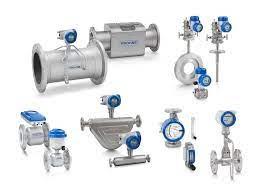Advanced Flow Meter Technology

The volume or mass of a gas or liquid can be measured with a Flow meter. Flow metres go by a variety of names, depending on the individual industry, including flow gauge, flow indicator, liquid metre, flow rate sensor, etc. They all do, however, measure flow. Flow metres can be used to measure open channels like rivers and streams. Or, more typically, measuring gases and liquids in a pipe is where a flow meter's greatest usefulness and diversity are found. The needs for flow metres range from mass flow to volume flow and beyond. To help you choose the flow metre that is appropriate for your particular application, experts have broken down each flow metre type.
There is also improved Eletta flow measuring technology available, some of which is probably going to be employed in advanced reactors. These include eddy current sensors, magnetic flowmeters, and ultrasonic sensors for measuring the flow of liquid metals. Different combinations of these sensors are available. The following is a quick description of several examples that use the technology:
- Two sound transducers are used in one form of ultrasonic flowmeter, placed facing each other and at an angle to the pipe. In a pipe, one transducer is pointed in the direction of the flow, and the other is pointed in the opposite direction. When an upstream transducer releases an ultrasonic pulse, the signal travels through fluid moving in the same direction as the pulse before arriving at the downstream transducer. When an ultrasonic pulse is emitted by the downstream transducer, the signal travels through fluid moving against the pulse's direction before arriving at the upstream transducer. The fluid's flow rate affects how quickly pulses travel through it, affecting their transit times. These transit durations are measured with Flow meter, and the difference between them and the fluid flow rate is directly proportional.
- A pipe with flowing liquid metal is positioned between a magnet's poles to create a magnetic flowmeter. The movement of a conductor through a magnetic field produces a voltage. Take note that the same idea underlies how electric generators work (motion of a conductor through a magnetic field).
- Three coils are arranged in the flow direction in eddy current flowmeters, which are instruments. An ongoing alternating current is used to ignite the intermediate coil. Induced voltages are produced in the other two coils by this current. The voltage differential between the upstream and downstream coils when submerged in flowing liquid metal is related to the rate of fluid flow.
- Mass flow is measured with Eletta coriolis flowmeters. They work by twisting oscillating flexible tubes due to the resistance of the fluid that is flowing inside the tubes. The fluid's mass flow rate and twisting are inversely related.
- Industry
- Art
- Causes
- Crafts
- Dance
- Drinks
- Film
- Fitness
- Food
- Games
- Gardening
- Health
- Home
- Literature
- Music
- Networking
- Other
- Party
- Religion
- Shopping
- Sports
- Theater
- Wellness
- News


